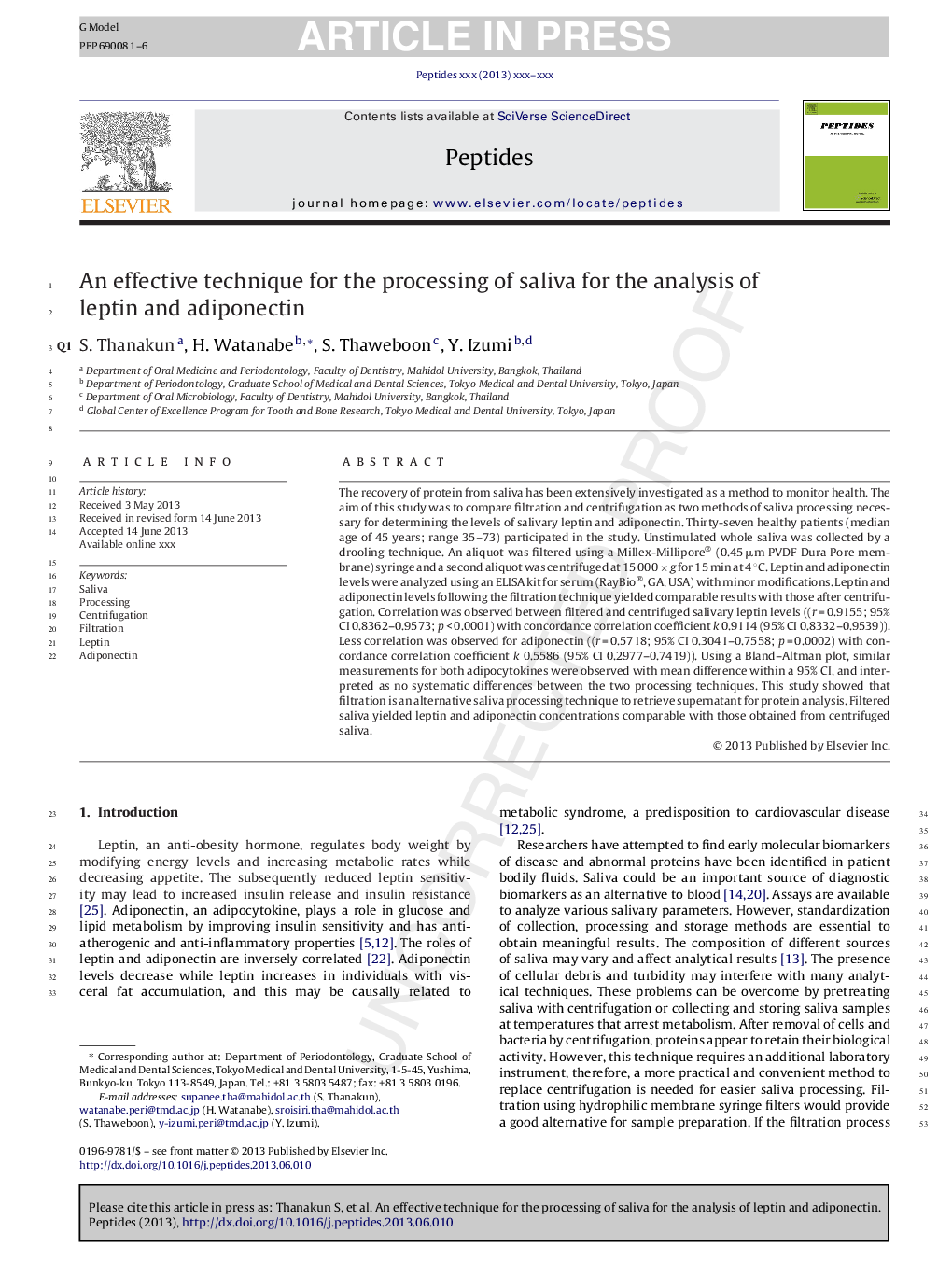| Article ID | Journal | Published Year | Pages | File Type |
|---|---|---|---|---|
| 8348556 | Peptides | 2013 | 6 Pages |
Abstract
The recovery of protein from saliva has been extensively investigated as a method to monitor health. The aim of this study was to compare filtration and centrifugation as two methods of saliva processing necessary for determining the levels of salivary leptin and adiponectin. Thirty-seven healthy patients (median age of 45 years; range 35-73) participated in the study. Unstimulated whole saliva was collected by a drooling technique. An aliquot was filtered using a Millex-Millipore® (0.45 μm PVDF Dura Pore membrane) syringe and a second aliquot was centrifuged at 15 000 Ã g for 15 min at 4 °C. Leptin and adiponectin levels were analyzed using an ELISA kit for serum (RayBio®, GA, USA) with minor modifications. Leptin and adiponectin levels following the filtration technique yielded comparable results with those after centrifugation. Correlation was observed between filtered and centrifuged salivary leptin levels ((r = 0.9155; 95% CI 0.8362-0.9573; p < 0.0001) with concordance correlation coefficient k 0.9114 (95% CI 0.8332-0.9539)). Less correlation was observed for adiponectin ((r = 0.5718; 95% CI 0.3041-0.7558; p = 0.0002) with concordance correlation coefficient k 0.5586 (95% CI 0.2977-0.7419)). Using a Bland-Altman plot, similar measurements for both adipocytokines were observed with mean difference within a 95% CI, and interpreted as no systematic differences between the two processing techniques. This study showed that filtration is an alternative saliva processing technique to retrieve supernatant for protein analysis. Filtered saliva yielded leptin and adiponectin concentrations comparable with those obtained from centrifuged saliva.
Related Topics
Life Sciences
Biochemistry, Genetics and Molecular Biology
Biochemistry
Authors
S. Thanakun, H. Watanabe, S. Thaweboon, Y. Izumi,
